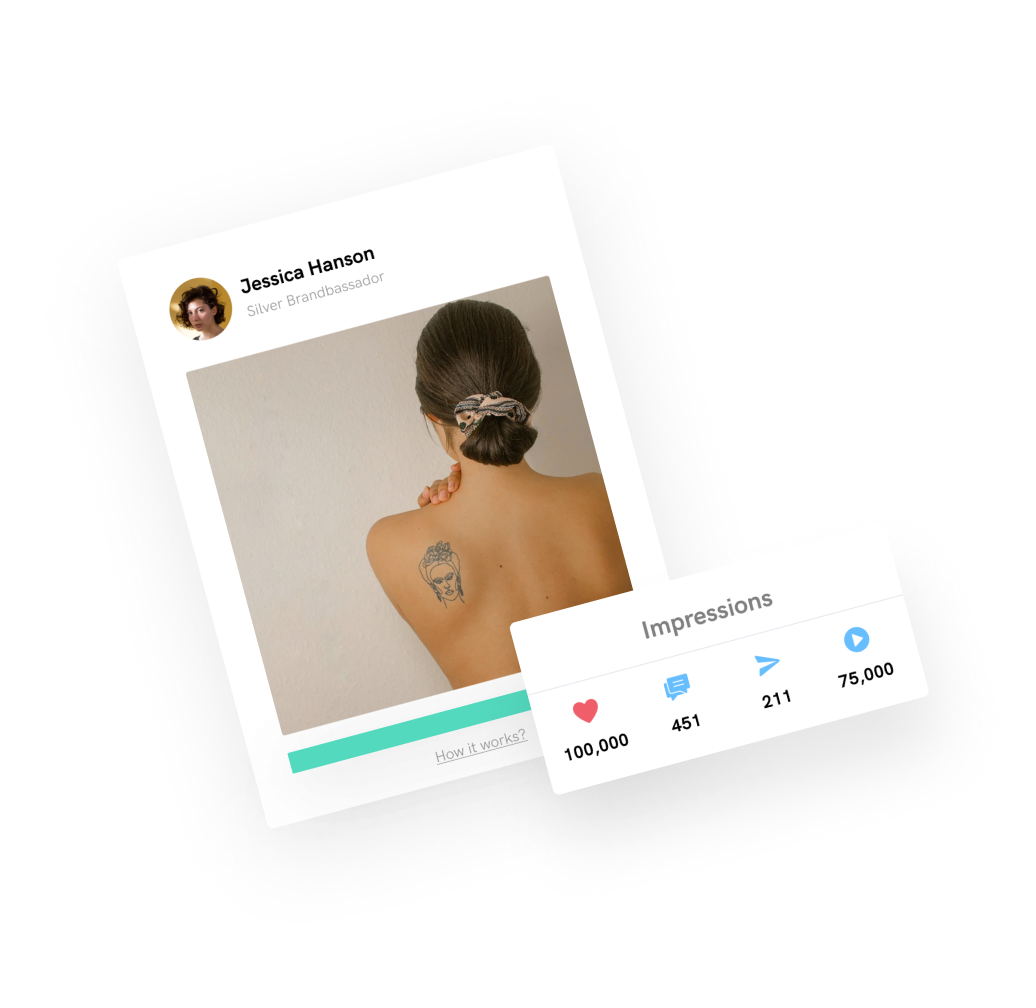User-generated content (UGC) is a great way for brands to get their names out there and establish themselves with audiences in a way they can understand and relate to.
That said, it often comes with issues around usage rights and ownership that can be tricky to navigate, and there are lots of misconceptions about what does and doesn’t constitute legitimate usage. If you're not careful, this could cause your brand both reputational and legal issues.
So, let’s go over UGC rights, what you need to know, and how you can make navigating these easier with the right tools and processes.
Just don’t forget that laws may differ in each country, so it's best to check the laws in your own jurisdiction!
The growing value of user-generated content in the digital era
So, why is UGC becoming more valuable to brands in 2023? We’ve listed some of the reasons below.
- UGC can take many forms, from influencer marketing to competitions, making it easy to adapt to your business and goals.
- UGC uses real experiences shared by users, making it seem more authentic than anything shot by the company's in-house team.
- UGC can be very cost-efficient. If someone makes a great video showcasing your store or an event, it costs nothing to hit the share button and show it to your followers.
The importance of understanding user-generated content rights
The value of user-generated content is obvious, but if you try to take advantage of it without knowing about UGC rights, you could get into serious legal trouble.
UGC rights frequently intersect with areas like copyright law, privacy law, and contract law, which all need to be followed.
You should know that:
- UGC is protected by copyright law as soon as it’s created. Unauthorized use of this content can lead to claims of infringement.
- UGC may contain personal or identifying data, which is protected under law. Using it might also infringe on someone’s right to control the commercial use of their identity, which the law requires companies to respect.
- When UGC is created on a social media platform, that platform’s terms of service apply. If someone tries to sign over the rights to a piece of content, you might be breaching those terms.
Navigating user-generated content rights
UGC is great for brands on social media, but as we’ve seen, there are some important legal considerations to keep in mind. Let’s look at some of these in more detail, including copyright law, fair usage, and creator rights.
The copyright law implications of UGC
With user-generated content, you're using content others have created for your gain, so it's important to understand the copyright implications of this. It's a common misconception that social media posts are "free" or "public" in a legal sense, but that's not actually the case.
When someone creates a piece of work, like a film, photograph, or short story, they automatically hold the copyright to it. The same goes for photos, videos, and text posted on social media. This gives the creator exclusive rights to use, reproduce, and share their work.
Fair use and transformative work considerations
Two nuances of copyright law that are relevant to UGC are “fair use” and "transformative work".
Fair use allows for the use of copyrighted materials in certain scenarios without first acquiring permission from the rights holder. While this provides some opportunities for using UGC, it also introduces additional ambiguity.
In the USA, fair use is determined by a four-factor test that evaluates:
- The purpose and character of the use
- The nature of the copyrighted work
- The amount and substantiality of the portion taken
- The effect of the use upon the potential market
Another concept closely tied to this is the idea of transformative work. Transformative uses are those that add something new to the original content, totally change it, or put it in a new context.
You can find out more about fair use and transformative work here.
Terms of service and platform policies
Each social media platform also has certain terms of service that it’s essential for brands to understand and familiarize themselves with. These might include specific rules around UGC or they might be slightly less clear-cut.
Terms of service, which brands and users agree to when they sign up, will typically clarify the rights and responsibilities of the platform and its users and cover topics like copyright, privacy policies, and community standards.
Remember that content usage rights will vary from platform to platform. Some may hold a broad license to use user-generated content, for example, which could interfere with contract terms around exclusivity when you’re collaborating with influencers or other affiliates.
Making sure that all the necessary team members are aware of these terms, policies, and contracts can become difficult. To help with this, you can use tools such as an ERP cloud solution. This enables you to store all these documents in one accessible place that’s connected to your project schedule and task descriptions, making it easier to avoid any potential issues that could arise.
User agreement liabilities and content moderation
Every big social media platform has rules around what can be posted or boosted by the algorithm too. To make sure your UGC efforts don’t cause problems, brands must remain aware of these guidelines and tailor their user-generated content strategy accordingly.
Overlooking those rules might lead to UGC being removed from the site or your brand’s account being ignored/blacklisted by the algorithm.
Revenue sharing in user-generated content creator collaborations
The UGC creators who are going to have the biggest impact in terms of sales and exposure are–you guessed it—influencers and brand ambassadors with engaged audiences. Whether or not they have an agency backing them up, they know their worth, which is why revenue sharing has become an important part of the UGC world.
Instead of paying an influencer for sales that may not happen, revenue-sharing agreements tie compensation to the number of sales directly attributed to a specific influencer. This might be done through tracking links or discount codes tied to them.
The terms of your agreements may vary from influencer to influencer and could cover everything from usage rights to revenue splits or additional compensation. Tracking all this at scale can become unmanageable and is an instance where an ERP solution or an ambassador marketing solution comes in handy.
As they combine financial management tools with project planning tools, they are a great way to accommodate different influencers, agencies, and agreements without losing track of who’s owed what or running into any legal disputes resulting from this.
Creator rights in commercial or branded use
The commercial or branded use of user-generated content is another area where creators’ rights must be considered. For example, you can’t use someone’s likeness for commercial purposes without their permission.
The stakes are even higher if you’re dealing with influencers, who often have agencies looking out for their interests and ensuring their rights are upheld. UGC contracts should thus address these rights specifically so everyone’s on the same page.
Enforcing intellectual property rights and compensation
Finally, the unauthorized use of content protected by intellectual property law can also get brands into trouble. For example, if a piece of user-generated content contains a song the creator doesn’t own, that’s a second layer of permissions you have to acquire to use it commercially.
Everyone whose IP or copyrighted work appears in the content must necessarily give their permission, which might come at a substantial cost.
Using UGC without risks
User-generated content is a powerful tool for brands that want to come across as authentic and personable. But if you don't understand and respect the rights, you could find yourself embroiled in a public dispute or legal case that’s damaging to your reputation.
By understanding the points we've discussed above, you can access all the benefits of UGC while being confident you're using it fairly, transparently, and in line with any relevant laws.
See how PopSockets utilise their ambassadors to generate content without any hassles with image licensing.









